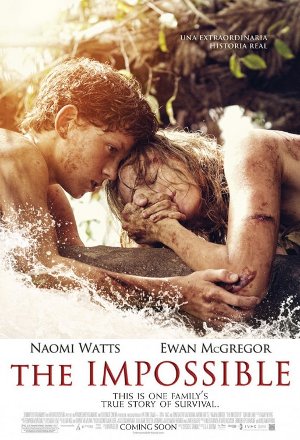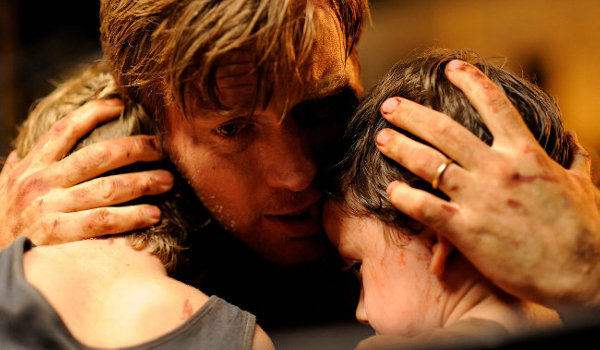- Title: The Impossible
- IMDB: link

 There are really only three types of disaster movies. The first are those focused on preventing a disaster (Armageddon, The Core). The second are movies solely concerned with the immediate problem of surviving the disaster (The Day After Tomorrow, 2012). And the last are focused more on living in the aftermath of a disaster (Blindness) than the disaster itself. The Impossible is the later.
There are really only three types of disaster movies. The first are those focused on preventing a disaster (Armageddon, The Core). The second are movies solely concerned with the immediate problem of surviving the disaster (The Day After Tomorrow, 2012). And the last are focused more on living in the aftermath of a disaster (Blindness) than the disaster itself. The Impossible is the later.
Based on real events, Naomi Watts, Ewan McGregor, Tom Holland, Samuel Joslin, and Oaklee Pendergast take the place of a Spanish family who survived the 2004 Indian Ocean tsunami while on Christmas vacation in Thailand. Sergio G. Sánchez‘s retelling of Maria Belon‘s story is a visceral tale of raw emotion, loss, and the chaos following the disaster which is almost as traumatic as the events of the tsunami itself.
Only six minutes of the near two-hour film are devoted to the actual disaster. That means the crux of the story isn’t the disaster itself but the emotional separation of family, the level of devastation, and the search for survivors.
The film pulls no punches in those six minutes and their aftermath in depicting the damaged caused by the tsunami and its heart-wrenching aftermath. It has been reported that survivors of the tragedy were moved to tears viewing only the film’s trailer. Although I wouldn’t argue The Impossible goes as far as to rely on shock value to tell its story, it certainly doesn’t take any steps to lessen the brutality of events or make the story easier to watch.
Director Juan Antonio Bayona‘s bare, you might even say inelegant, style also masks the fact that there’s not a hell of a lot of story to tell. There’s a disaster, and there’s a family reunited after time apart. That’s about it. The film succeeds in large part by simply allowing the actors to react to the brutality of events their characters find themselves mired in.

It’s also important to notice that The Impossible spotlights only vacationing families, even in small roles. The script has no interest in the lasting devastation of the tsunami or to those who permanently reside near the lush vacation estates those like our protagonists were staying in when our story begins to unfold. The choice of using strangers lost in desolate landscape they don’t know isn’t a bad one. However, the film doesn’t use their lack of understanding of the surroundings to help tell the story. Our rather pampered victims are driven to hospitals and various safe sites, only being forced to make their own way to safety for the briefest of moments.
The effects and performances of McGregor and Watts make The Impossible worth seeing, but once you get past the horror and initial survival the film doesn’t really have a lot to say as it falls back on clichéd barely-missed opportunities and misunderstandings in an attempt to continue the film’s tension when more character-driven moments (something the film does well, when it takes the time) are called for. It’s an easy recommendation for a single viewing, but The Impossible isn’t a film I’m likely to return to anytime soon.

I think I will wait for the DVD